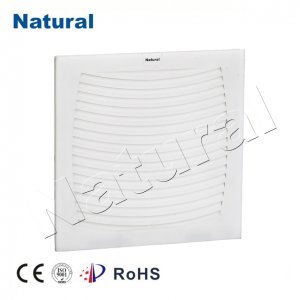Indoor air quality (IAQ) has a significant impact on our health and well-being. Poor IAQ can lead to a range of health issues, including respiratory problems and allergies. To combat this, the use of ventilation fans and filters has become increasingly popular. These technologies play a crucial role in maintaining clean and fresh indoor air, ensuring a healthier living environment for everyone.

Ventilation Fans: A Breath of Fresh Air Ventilation fans are essential components of modern buildings, serving to exchange indoor air with fresh outdoor air. They effectively remove stale air, moisture, and pollutants from indoor spaces, promoting better air circulation. There are various types of ventilation fans, including exhaust fans and supply fans.
Exhaust fans are commonly found in bathrooms and kitchens. They remove humid air and odors from these spaces, preventing the growth of mold and mildew. Additionally, exhaust fans eliminate harmful pollutants that can arise from cooking processes, reducing the risk of respiratory problems.
Supply fans, on the other hand, bring fresh outdoor air into the building. This helps dilute indoor pollutants, ensuring a continuous supply of oxygen and preventing the buildup of harmful chemicals. Supply fans are especially crucial in spaces where windows are rarely opened, such as office buildings and apartments.
Filters: Trapping Pollutants for Cleaner Air
Ventilation fans are often complemented by air filters, which play a vital role in improving IAQ. Air filters capture particles such as dust, pollen, pet dander, and even microorganisms like bacteria and viruses. These filters come in various types, including mechanical filters, electrostatic filters, and high-efficiency particulate air (HEPA) filters.
Mechanical filters work by physically trapping particles as air passes through them. They are efficient at capturing larger particles but may not be as effective for smaller particles. Electrostatic filters use static electricity to attract and trap particles, making them more efficient at capturing finer pollutants. HEPA filters are the gold standard, capable of capturing particles as small as 0.3 microns with an efficiency of 99.97%. They are commonly used in medical facilities, homes of allergy sufferers, and areas with high pollution levels.
Synergy Between Fans and Filters
The synergy between ventilation fans and filters is evident in their combined efforts to maintain a healthy indoor environment. Ventilation fans bring in fresh air and expel stale air, preventing the accumulation of pollutants. Filters then work to trap these pollutants, ensuring that the air circulating indoors is clean and safe to breathe.
However, it's crucial to note that filters need regular maintenance and replacement to function optimally. Clogged or dirty filters can restrict airflow and reduce their effectiveness. Regular cleaning or replacement, as recommended by the manufacturer, is essential to ensure the continued efficiency of both the fan and the filter.
Conclusion
In a world where we spend the majority of our time indoors, ensuring good IAQ is paramount. Ventilation fans and filters play a crucial role in achieving this goal by promoting air circulation and capturing pollutants. Their combined efforts create a healthier living and working environment, reducing the risk of allergies, respiratory problems, and other health issues. As we continue to prioritize our well-being, integrating ventilation fans and filters into our indoor spaces is a proactive step toward breathing cleaner, fresher air.
 28 items Patent
28 items Patent
 28 items Patent
28 items Patent
 28 items Patent
28 items Patent

